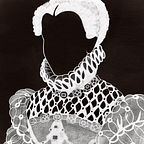Don Carlos, Prince of Asturias, and His Escape Plan
Philip II of Spain once fathered a son with the inbreeding coefficient close to that of a child of two siblings, the labour for which lasted three days, and disobedience later ensued.
 Philip II of Spain, for all his fault and equal splendour in ruling, loved his children. Though only four of them survived into adulthood, he showered his offspring with affection in letters and gifts from a distance, and personal attention when he was present. For the longest time, his eldest Don Carlos was an only child, and one that had little connection to his parents at that. His mother María Manuela of Portugal died just four days after his birth, whereas his father left the country in 1548; the year Don Carlos turned three. Though Philip II returned in 1551, he’d be gone once again from 1554 to 1559 (the Low Countries, France, and England-period).
Philip II of Spain, for all his fault and equal splendour in ruling, loved his children. Though only four of them survived into adulthood, he showered his offspring with affection in letters and gifts from a distance, and personal attention when he was present. For the longest time, his eldest Don Carlos was an only child, and one that had little connection to his parents at that. His mother María Manuela of Portugal died just four days after his birth, whereas his father left the country in 1548; the year Don Carlos turned three. Though Philip II returned in 1551, he’d be gone once again from 1554 to 1559 (the Low Countries, France, and England-period).
Background
Little Carlos never had it easy. His wet-nurse was gone before he was a year old, and he had obviously learned to see her as his mother given his tender age, so the separation caused him great bouts of stress and anxiety. Afterwards he had his governess and his aunt Juana to latch onto, and with as much loving care as she could have given…
